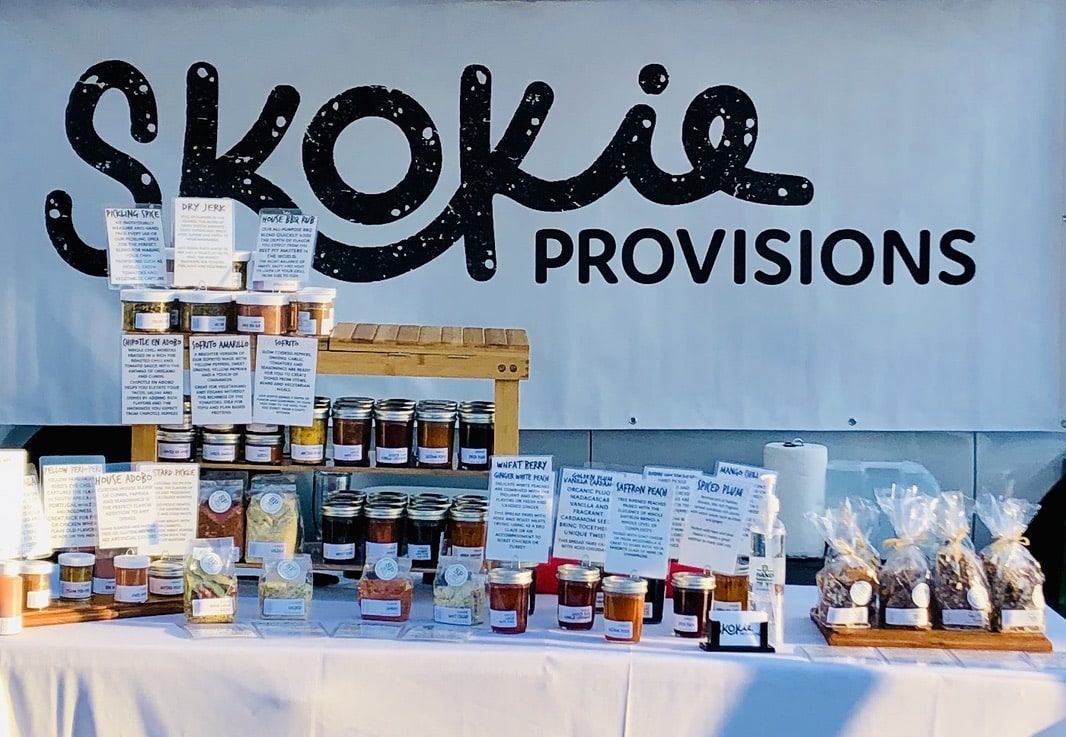
As a management advisory services (MAS) consultant, I needed to adjust my business from focusing of the success of others through advisory services and shift to become an operator during the past year.
Not only was it a shift but a move into a completely different realm of the culinary world. We formed an artisan food company, Skokie Provisions www.SkokieProvisions.com, focusing on localized production of fresh and shelf stable foods in an effort to shorten the supply chain. Our goal is to get product from local farmers and artisans and provide restaurant quality food at home but also to support small hospitality companies that may not have the staff or bandwidth to produce the food they want. Buying prepared food from large broad liners has its benefits but also its moral challenges from preservatives and mass distribution through the complexity of the supply chain.
Outside of the regulatory challenges of licensing, creating an in-depth Food Safety System and building a brand, the latest challenge is the building a production space that is highly flexible and built around the concept of small batch processing. Our product line is designed to take advantage of current local availability and to process a wide variety of products.
Bridging the gap
The large-scale industrial complex of food manufacturing is based on focused, volume continual processing to reduce the costs of each step of the journey from seed to table. For the small, I mean tiny producer, such as us, choosing equipment that bridges the gap between a volume retail food operation to manufacturing is the key. One big part of that is the validation process required of FDA, USDA as part of HACCP and Food Safety Systems.

The Validation process is based on scientific studies and expertise that processes and equipment used can actually do what you need it to do. For shelf stable foods such as jarred and canned goods, they require a pathogen kill step whereby the internal temperature of the core on the container reaches a specific temperature for a specific time frame.
In order to utilize that equipment in a manufacturing setting, either the manufacturer has to conduct the testing, or the equipment manufacturer has to supply their imperial scientific data as the validation. Proving that the CCP’s (Critical Control Points) in a HACCP system for the USDA or Process Preventative Controls in an FDA Foods Safety Plan can be accomplished using their equipment is required. This is one service that many traditional commercial foodservice equipment manufacturers may not be able to supply.
The other big challenge for manufacturers who wish to sell across state lines is understanding the potential for recalls of food that may be deemed “adulterated” and must be removed from the marketplace. In most cases the largest percentage of recalls come from mis-labeled food that do not declare known allergens. Like many other companies, our goal is to have a zero-recall record. So, having an allergen mitigation strategy is key. Not just labelling but the design and operations of hygienic and allergen zoning. The key is to create the best possible separated environments for raw, in process and ready to eat products.
As we work towards securing and designing a new space, creating cold rooms that are designed with the need for environmental monitoring systems and allergen zones all become design considerations that are normally not considered especially in small hybrid space such as ours that have both retail and regulated manufacturing components under the same roof.
John Reed
